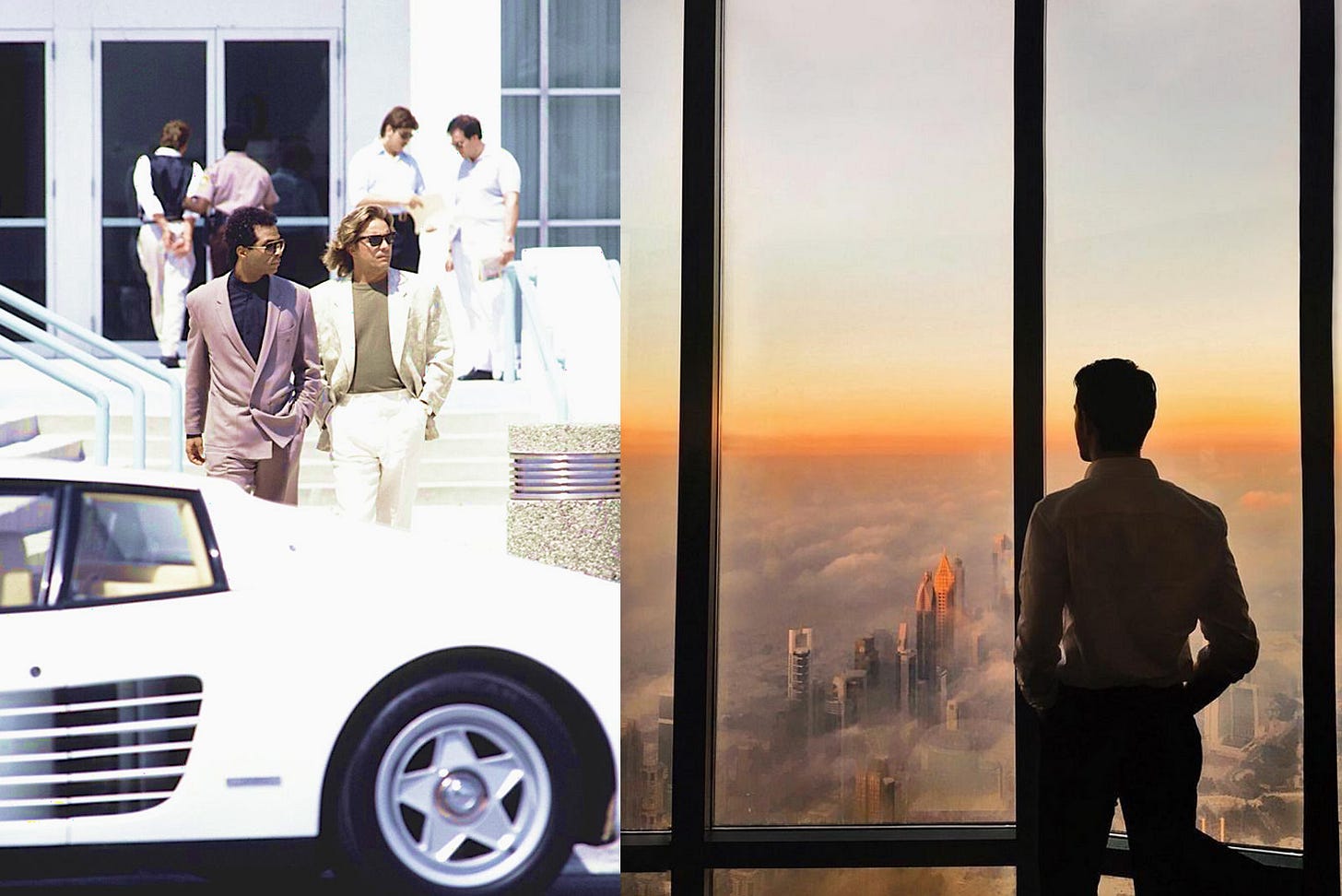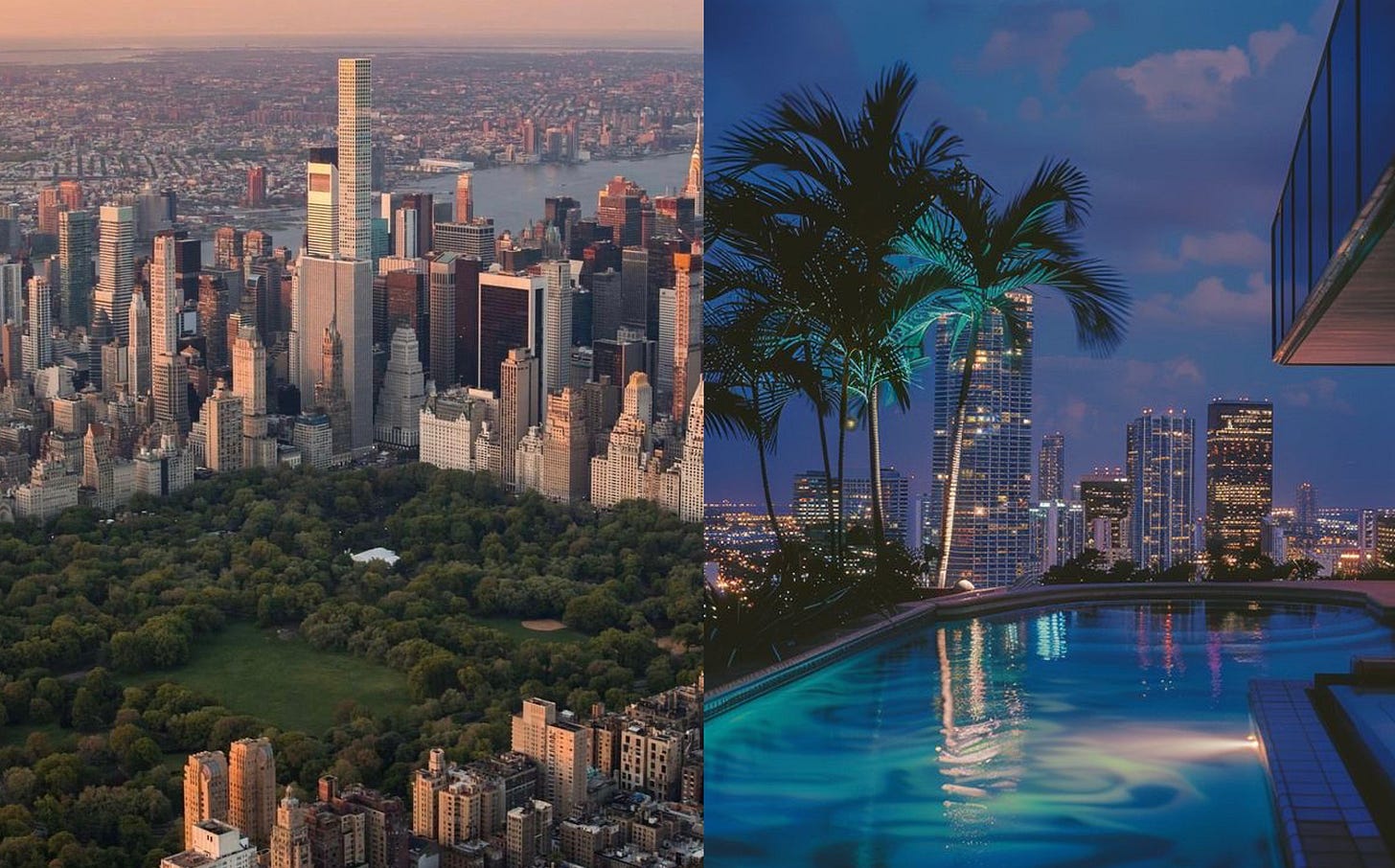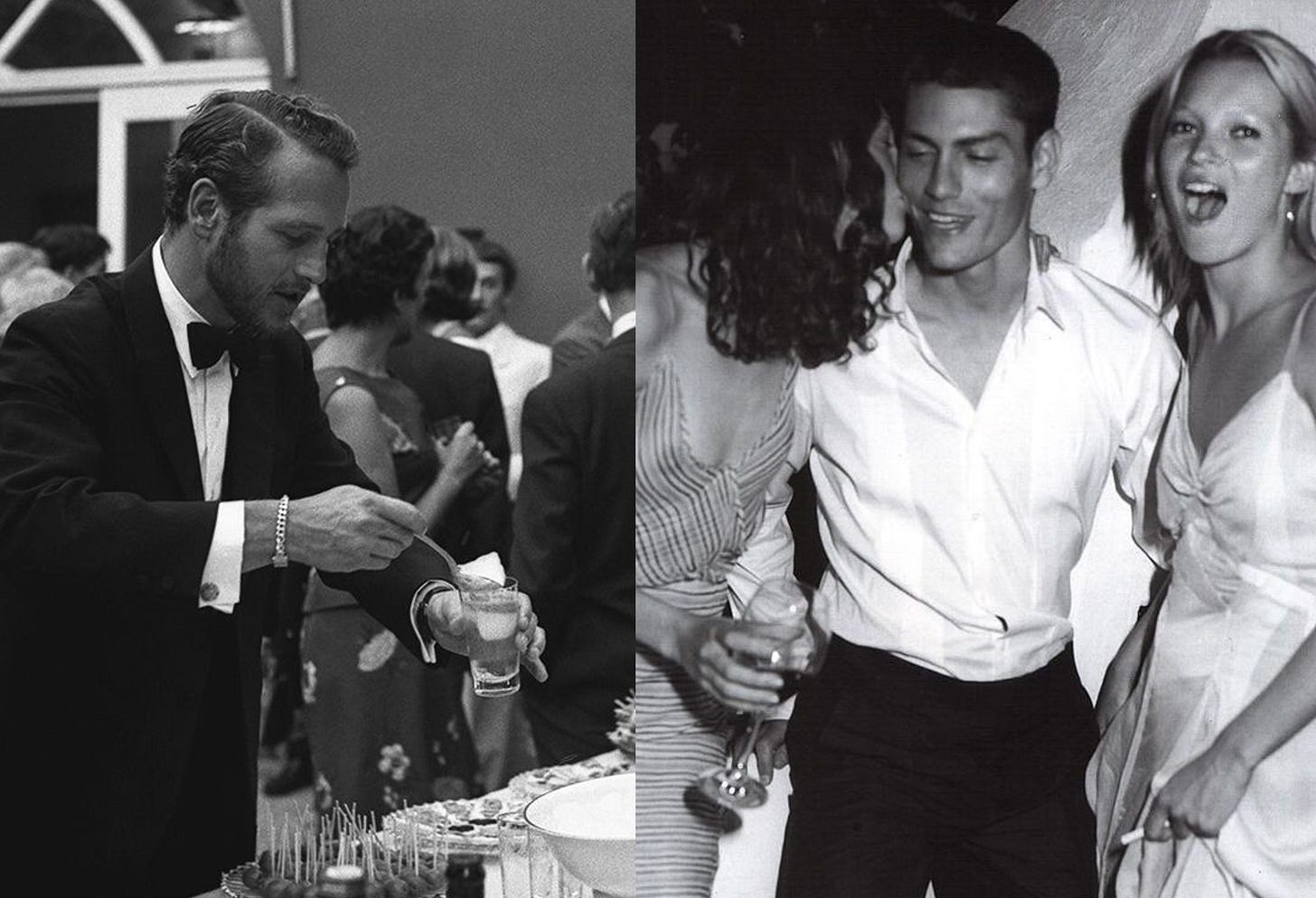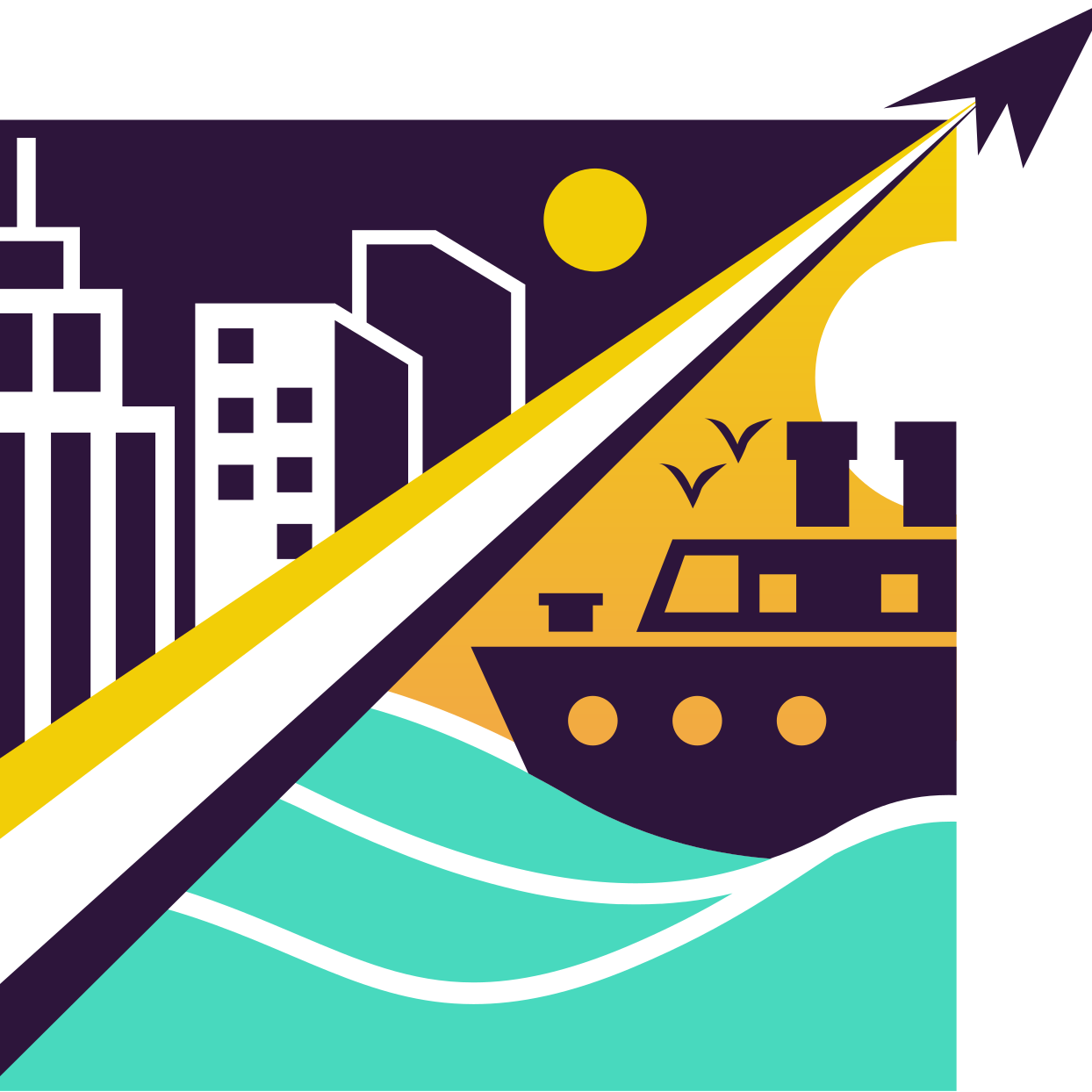How to Design a Two City Lifestyle that Works for YOU
What I learned from four years living between New York and Miami...
A GOLDEN AGE
We live in a brave new world for location independence.
It’s easier than ever to choose where you want to live, not just where your job happens to be. The internet enabled this golden age of individual autonomy and ambitious men are taking advantage. Many are even choosing to live in two places at once.
There are right and wrong ways to do this. The wrong ways, unfortunately, are the most visible and tempting.
The 2010s saw an explosion of influencers splitting time between their home country and the likes of Dubai, Marbella, or Bali. Teen boys watched them race sports cars and smoke cigars in these tax advantaged paradises. Beautiful women appeared in the content, attracted by big muscles and even bigger crypto wallets. This was their sales pitch and some sort or course was the inevitable product.
Then there’s the machine cog, the NPC drone. You're an international business middle manager who reads the Economist and has a Nespresso machine. Every few years you move to a new city without severing connection to the corporate home where you expect to land full time after that next big promotion. This is a stable world, with superficial change in a context of sameness. The business class lounge in London is not that different from the one in Singapore or Chile.
I love money, fast cars, and beautiful women but the IG lifestyle is snake oil. It’s no different than any other advertisement claiming you’re a purchase away from being one of the cool kids. I also get the stability and societal respect of the NPC route, but it’s a gold plated road to nowhere. It’s hard to build anything real when you’re transferred every other year. Expect to be laid off at forty two with nothing but a few passport stamps to show.
There is, however, another way to live in two cities, a more sustainable path. For the past four years I’ve lived between New York City and Miami, a lifestyle I stumbled into without a clear plan. Along the way I've learned some lessons on how to do it successfully.
Based on my experiences and the experiences of others there are three key components. First, pick your places. You should be passionate about them and they should work well together. Second, spend some time to really identify what you are looking for out of this lifestyle. Third, dig into building your ecosystem.
This article is for those who have their life together, not for those finding “themselves”. It takes a clear head and self knowledge, but done correctly dual city living can dramatically upgrade both your opportunities for personal and professional growth.
THE BACKGROUND
My story is a cliche. I was a committed New Yorker who believed the John Updike quote, “that people living anywhere else had to be, in some sense, kidding.” In 2018 I purchased a spacious apartment in a charmingly gentrified part of the city. I was inoculated from all the hardships that had shaped my early days in New York. I had a washing machine, a parking spot, central AC, and a doorman in livery smiling when I went out to enjoy the city.
But then COVID happened.
My girlfriend and I pretty quickly decided to ride it out down in Florida. We had family there and anything seemed better than the post apocalyptic wasteland of lockdown New York.
Spending months in the golden sunshine of Florida my perspective began to change. I had been skinny fat in New York, with my waistline kept in check by constant walking. In Florida I found a passion for exercise and nutrition. I cultivated new outdoor hobbies like fishing and tennis. I began waking up early and spending more time with my family.
More than that, my attachment to New York started to feel shallow. Old friends weren't texting as much and many moved. My TV production job ended quietly under pressure from lockdowns. All the buzz seemed to be in Miami and I found a real estate agent. By May 2021 Miami Beach was my new “home”.
But was it?
I was in essence getting married while still seeing an old lover. My New York apartment was there, waiting seductively. As Miami summers hit I flew north. I got to enjoy the old pleasures; underground art shows, dive bars, interesting cinema and book talks.
I decided on a compromise, to split time. Over the last four years I’ve learned how to efficiently live in both cities while maintaining friendships and a community. I am writing in the hopes that my insights will prove useful for anyone else chasing a similar lifestyle
FINANCIAL DISCLAIMER
I can only write from my own perspective, which is that of a poor rich person. I have enough money to provide a lot of personal freedom and flexibility, but costs are still a real concern. It would be a lie to say it’s cheap to split time between two of the most expensive cities on the planet. That being said, because of property price appreciation and the tax advantages of living in Florida this has largely been a financial wash.
I’m professionally location independent, but living in a major city is important for me. I know a lot of people who are splitting time between two rural locations, this is clearly the cheaper option.
STEP 1 - PICKING YOUR LOCATION
If you want to live between two cities, pick ones that have, in a phrase from corporate bullshit, synergy. These places support each other and offer something the other one doesn’t. You should be drawn to each for different reasons and have a clear vision of how their interaction will turbocharge your life.
Splitting time between New York and Florida isn’t a new thing, retired snowbirds have been doing it for years. This is traditionally about weather, Florida is beautiful in the Winter but a hot swamp in the Summer. New York State is frigid in the Winter but great in other parts of the year.
Miami is considered the sixth borough of New York. There are lots of cheap flights between the two cities which effectively shrinks the distance. Both cities are obviously in the United States so they have the same language and financial system.
Also, because it is such a well worn path many rotate between these two cities. I spend a lot of time with the same people, no matter which city I am in. This solves a lot of the issues around social life and networking. A social life in Miami can lead to an elite network in New York and vice versa.
There are many combos like this, Milan and Monaco and Austin and LA come to mind. London and Paris also provide interesting synergy. For the Australian audience maybe Sydney and Bali fit the bill.
When deciding where to live there are also practical and legal concerns. You will need to pick a place where you actually live, where your residence is.
I live in Miami and spend time in New York. My current schedule is four months of the year in New York, one month traveling, and the rest in South Florida. For me, the choice of Miami was pretty obvious. My family lives in Florida, and as my mom ages spending time with her is increasingly important. Also, there is no state income tax in Florida which is a large savings. Homestead laws, which limit property taxes and provide other protections, incentivize Florida as a primary residence.
There is a huge layer of flexibility built into the Florida legal system. I have the freedom to homeschool my son. There are no vehicle inspections which makes my motorcycle hobby more fun with a Florida Drivers license. It’s truly a free state, and the idea of living in New York again feels claustrophobic.
Many are flocking to Dubai over similar concerns. As a lot of the Western World moves towards centralized and socialized systems, freedom focused locals will only increase in popularity as boltholes for the independent minded.
STEP 2 - MAXIMIZE ON WHAT YOU TRULY ENJOY
If you choose to live between two cities it’s important to think about what you actually like and how you can maximize the value provided from each location. You don’t get to be everywhere and do everything.
For me Miami is about building, stability, and connection.
My family is in Florida. My primary friend group is now in Miami and I enjoy being part of the local community. It’s my financial base. The culture also fosters better choices. The emphasis on health and fitness has improved my quality of life. It feels like a sustainable long term home.
New York City is about excitement.
I go to New York to try new things and explore new ideas. I improve my public speaking through stand up comedy classes. I connect with artists at gallery openings. There is always a new restaurant to try. Airlines have better service from NYC which enables exciting summer travel. My favorite authors, speakers and thinkers are always passing through NYC. It truly is the capital of the world
That’s not to say that I don’t look for crossover. I am trying to bring my healthy lifestyle from Miami to New York. This has unlocked an entire range of new experiences, and I am enjoying the NYC wellness community from indoor rock climbing to new age Sauna culture.
The dual city approach works when you are getting something unique from each place, it’s worth sitting down and actually thinking about what you want. This will be the foundation of how you design your lifestyle.
There are no right or wrong answers here. You might be a passionate surfer, and Bali makes sense for you. You could run your own hedge fund, and the slow pace of the Indonesian island would drive you crazy. Self honesty is important, because this is how you create a life you like, not just a life you’re supposed to like.
Next take your passions and use them as the building blocks for your eccosystem.
STEP 3 - BUILDING ECOSYSTEMS
The idea for this piece came from the Lethal Gentleman post “How to Design a Lifestyle Where Opportunities Come to YOU” I was inspired by Jack’s concept of an ecosystem. I don’t normally comment, but his points hit home with my experiences living across two cities. We started a conversation that led to this piece.
Looking back on my 20s and early 30s in New York, I see now that I made the mistake of building my life into a series of disconnected silos. I had friends, but they existed individually and did not connect with each other. I had jobs, but I was not part of a large community in my industry. I had relationships, but they were not connected to my friend group.
Essentially I was spinning a lot of plates and getting exhausted. Every relationship, from romance to business and friendship, was entirely on me to maintain. I had to go out and hunt down every opportunity starting from scratch. This exhaustion is often what people are feeling when they say they are burned out. Social connections which existed since our days hunting and gathering in the forest have melted away under the neo lights of the high pressure big city.
Moving to Miami, I was determined to build my ecosystem. Instead of focusing on the end goal, whether a friendship or business, I looked to become part of networks that autogenerated opportunities. Miami, with its open culture, is perfect for this.
My first year was spent aggressively socializing, going to parties and saying yes to pretty much everything. I was fortunate that one person I met in these rounds was incredibly gracious and open, inviting me into his inner circle. This new ecosystem centered around motorcycling with Friday lunch rides as the primary meetup. This has generated some of the best friendships of my life.
From there I connected with other groups. I am part of a large tennis group. Recently I joined the Economic Club of Miami in an effort to connect with those who have similar intellectual interests. My phone is now whirring with WhatsApp groups, constantly pushing new activities, ideas, and opportunities.
What does this have to do with living in two cities?
An ecosystem spins when you’re away, so you can easily jump back in at any time. It is constantly generating moments to get lucky, to socialize and to network. My old silo approach put the onus entirely on me. When I was away, and didn’t put in the effort, everything fell apart.
The Miami ecosystem is so powerful it has improved my life in New York. On a practical level I found a flexible renter for my apartment and vital professional services through it. On a social level I’ve made friends in New York through the Miami ecosystem. Many of the people I’ve met in Miami are leading a similar lifestyle which has improved our connection.
The takeaway is that if you want to split time it’s impossible to use a silo strategy. Look for ways to join groups, become part of the community. In a new place this takes effort and will not just happen like it did in your childhood hometown. Be patient and use your true desires as your north start.
CONCLUSION: EVOLUTION AND FLEXIBILITY
My strategy has evolved over time.
At first I was constantly going back and forth, spending weeks at a time in each place. This was crucial for keeping the silo plates spinning. My life has evolved and as I’ve become a family man this is not tenable.
Now I have a more traditional snowbird strategy. I rent my NYC apartment in the winter and move back and forth seasonally. I’m also doing less travel so I can focus on building my life in the two chosen cities. While I don’t live in New York I spend more time there than many professionals who travel for work but have a New York primary address.
I am happy with how things have worked out, but that doesn’t mean that there won’t be changes. Life is unpredictable so you have to be flexible. Don’t dig in your heels, learn to flow with the rhythms of both places. Trying to force this lifestyle will break you financially and psychologically. Change is inevitable so you must welcome it.
If this concept is something you want to build out in your own life, subscribe to the Floida Flâneur.











Very interesting post - and great to see someone advocating for a non-Dubai lifestyle.
I've tried it, and it's about the most soul-sucking, materialism-sans-class place on planet Earth.
Definitely would love to hear more about the process of building an ecosystem within your desired city, as that's going to be a key focus of mine in the next few years, as I finally move away from travelling fulltime.